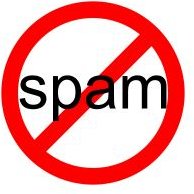The Complete Spam Reduction Guide
Malware authors enjoy harvesting email addresses to use for sending spam from the compromised computers of unsuspecting victims. Spammers work like advertisers because they conduct time-based campaigns. They will send fraudulent diplomas during February and March, pharmacy emails in June to August, and malware emails during Christmas and New Year. The rest of the year is anything they want people to receive, such as non-pharmacy product ads, 419 scams, phishing, dating/sexually explicit material, gambling and more. In short, spammers work full time and never take a vacation.
Every computer user with an email account will eventually receive spam. Some may not notice it if their email client is filtering unwanted emails of if their Internet Service Provider (ISP) filters it for them. Some free web-based email providers, such as Hotmail, Yahoo!, or Gmail, automatically remove the junk emails from your inbox and put them in a separate folder.
With or without spam filtering, spam continues to arrive in thousands, or maybe even millions of email addresses. Businesses are affected because they have to spend time and money to ensure spam messages will not reach their staff or customer’s machines. In this spam reduction guide, we hope you will find the anti-spam solution for your organization or family’s computers.
What is Spam All About?
Before using any spam prevention techniques or tools, it’s best to learn more about spam. Why do you think there are only a few spammers and malware authors being arrested and jailed? What are the sources of spam and how did those spammers get your e-mail address in the first place? You might be surprised to see the answers to these questions.
- What is Spam?
- Top 5 Sources of Spam
- How Spammers Get Your Email Address
- Do Laws Prevent or Legalize Spam?
- Text Messaging Spam, What is it?
- Why is Spam so Difficult to Stop?
Identification
To block or not to block, that is the question. Sometimes spam mail is obvious and other times it’s cleverly written to trick you into replying. It’s like downloading files from the Internet where we aren’t sure if it is a safe or unsafe download. People will use the real-time protection of antivirus programs to check files for safety to see whether it contains malicious code or if it’s safe to execute, open or share. Also, the antivirus program will try to identify the malicious file by checking from a database (remotely or with a local signature database) so they can alert the user why it is blocked and what it can do to the computer or private information in the machine. You should learn how to identify malicious and unwanted e-mails the next time you receive an unexpected email message.
- Identify Spam and How to Avoid Spam Emails
- List of Business Scams for Home Workers to Avoid
- What Does Spam Do? How It Damages Your Business
Filtering Unwanted Emails
Email, chat and other applications that have the ability to send and receive messages are often built with a spam filtering feature. Take advantage of using junk mail filters so you don’t have to spend 2 to 3 hours manually filtering the good and the bad emails. This will also keep you from accidentally deleting something you may have wanted to keep.
- How to Use the Microsoft Outlook Spam Filter
- Fake Outlook Email, Who Sent It?
- Blocking Pharmacy Spam on Microsoft Outlook in Windows
- Blocking Spam and Phishing Using Windows Live Mail
- Using Windows Vista’s Junk Mail Filter to Block Unwanted E-mails
- How to Block Unwanted Messages in Instant Messenger Programs
- How To Avoid Your Emails Being Tagged as Spam
- Spam Blocking in Outlook: Difference of Spam and Junk Mails
- Blocking Spam Messages in Skype
- How to Block Spam on Your BlackBerry
- How to Filter Out Spam with Apple Mail Rules
- How a Mail Proxy Works to Control Spam and Junk Emails
- How to Stop Sending Spam Using Exchange Server
- How To Stop Backscatter Spam in Microsoft Exchange Server
- How to Prevent An Email Spam Attack
- How to Build a Linux Server with Anti-malware and Anti-spam Protection
Prevention Tools
To remove or prevent malware, we use a malware scanner and remover. To prevent receiving spam emails, we need similar tools called anti-spam tools. Check out these software reviews if you decide to use dedicated tool in removing spam emails instead of depending on built-in junk mail filters in email programs. Often times, anti-spam software can be used in conjunction with the email client’s build-in filters to maximize protection.
- Review of eMail ID, Free Plugin to Identify Legitimate E-mail Senders
- Review of MailWasher, The Best Free Spam Blocker Available
- DNS Spam Blacklist Servers for MailWasher
- SpamEater Pro, Anti-Spam Program for Windows
- SonicWall Anti-Spam Desktop Review
- e-Capsule Private Mail HD
- Top 3 Free Spam Filters for Windows
- Spam Terrier, Free Anti-Spam for Windows
- Best iPhone Spam Filter
- Review of GFI MailEssentials, Anti-spam solution for Exchange/SMTP/Lotus
- SpamTitan Review, Anti-Spam Solution for Small and Medium-sized Business
- The Top Five Anti-Spam Tips for Business
References
- Image credit: No Spam icon By Indolences Public domain via Wikimedia Commons
